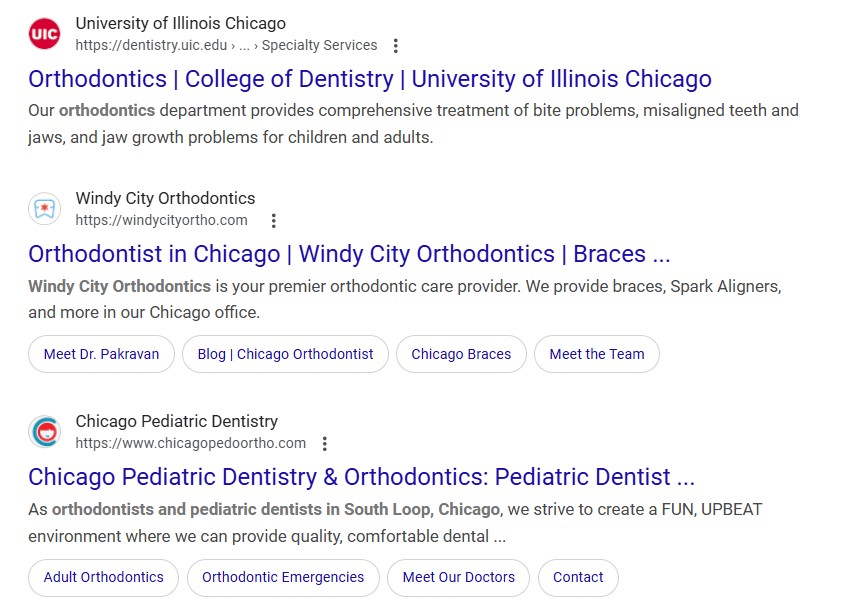Contents
There’s no such thing as empty space in search results. If your website isn’t at the top, someone else is. Competitor analysis helps you understand why some companies rank on the first page while others are stuck on the second.
In this article, we’ll walk through how to analyze your competitors’ SEO and borrow their best practices. You’ll learn which tools to use and how to uncover your own weak spots.
Why Analyze Competitors in SEO?
It’s simple: what already works in your niche will most likely work for you too. Competitor analysis is not just theory. It also gives you practical tools:
- Keyword lists. The top-ranking pages set the standard for everything from keyword density to headings and structure.
- Content maps and page ideas. By studying competitors’ sites, you can spot gaps in their keyword coverage and build out your own content plan: informational articles to fill semantic gaps, and commercial pages that are missing.
Tools for Competitor Website Analysis
Most competitor research tasks can be done with SEO tools. They help you find the right keywords, check bounce rates, measure engagement, and see which content drives the most clicks.
Here are the go-to tools:
| Ahrefs | Backlink profile, keywords, content | See who links to competitors, which anchors drive traffic, and what content performs best |
|---|---|---|
| SEMrush | Keywords, rankings, traffic | Sources of traffic, keyword gaps, competitor ad and organic reports |
| Serpstat | Keywords, site structure | Track rankings, analyze semantics, compare competitor sites |
| SimilarWeb | Popularity, traffic channels, audience | Market share, traffic distribution, paid traffic reports |
| Screaming Frog / Sitebulb | Technical health | Site speed, mobile readiness, metadata, structured data issues |
How to Find Top Competitors in Your Niche
Finding competitors is simple. Open an incognito window and search for the main keywords in your niche — the terms people typically use when looking for your product or service. For example, if you type “orthodontist Chicago,” your competitors will be the other clinics that appear in search results.

You can expand the list with tools like Ahrefs and SEMrush. They’ll show which websites get traffic from the same queries. It’s also worth checking related niches: for instance, how other dental practices attract patients and what makes them different from you.
By the way, running a full site audit can reveal technical issues and growth opportunities. Even if you already have an in-house team or an agency, an audit helps verify their work and uncover areas to improve.
Competitor Content Analysis
Content is one of the main SEO factors. It influences both rankings and the number of leads. Algorithms take into account not only technical aspects but also how useful the content is.
The sites at the top are the ones that solve user problems better than others. The top three capture up to 70% of all search traffic.
A quick look shows that leaders invest heavily in content. They analyze demand, refine site structure, and use up-to-date formats. These are the strategies worth studying:
- Which topics bring traffic.
- How pages are optimized.
- What the target audience is reading and what needs they have.
- Which formats appear most often.
How to Compare Competitor Content with Yours
Tools like Ahrefs, SEMrush, or Serpstat will show you the keywords, their search volume, and competitiveness.
When building your semantic core, don’t focus only on high-volume keywords. They drive traffic, but competition is too strong. For example, ranking for “sneakers” is almost impossible right away because big brands and marketplaces dominate.
It’s easier to get into the top results with mid- and low-volume keywords that target specific intent. Instead of just “sneakers,” try “winter running sneakers” or “women’s sneakers with cushioning.” Traffic will be lower, but visitors will be more ready to buy.
Commercial factors are what make SEO texts work for business. Even if a page is perfectly optimized, it won’t bring leads if it doesn’t help users make a decision.
Key commercial factors include: structure (how easy it is to read), benefit blocks, internal linking, reviews, FAQs, and calls-to-action.
Pay attention to:
- How the structure is built: is it easy to read and logical?
- Which commercial elements are included: benefits, reviews, guarantees, FAQs.
- Placement of CTAs: “Buy,” “Book an appointment,” “Request a quote.”
- Whether there are contact forms or chat support.
- Internal linking: can users easily navigate to other sections.
- Availability of contacts and payment options.
Even top-ranking sites often don’t optimize these factors fully. This means you can outrank them not only with SEO but also by offering a clearer structure and stronger CTAs. Such improvements increase conversions even with the same amount of traffic.
Backlink Profile and Competitor Strategies
A backlink profile connects your site with other resources through links. The more authoritative the referring site, the stronger the impact on your SEO.
Competitors at the top usually have a well-developed link-building strategy. Their backlinks come from industry websites, media outlets, blogs, and partner platforms.
Here’s what to do:
- Analyze competitor sites with Ahrefs or SEMrush. They show referring domains and link frequency. This helps you see which platforms are worth targeting and how many backlinks you’ll need.
- Review anchor texts. Anchors can be branded, keyword-based, or geo-focused. Studying them shows how competitors diversify their link profile.
- Look for gaps. Ahrefs’ Content Gap tool highlights websites that link to your competitors but not to you. These are potential opportunities for outreach.
- Natural mentions. Top sites often get links from authoritative resources like research reports, news outlets, and industry rankings. Identify where your competitors are mentioned and try to get featured there, too. Avoid spammy or irrelevant sites — they hurt more than they help.
- Guest posting. Publish expert articles on high-authority platforms. You’ll get a backlink and attract new traffic.
- Social media links. If competitors are active on LinkedIn, Twitter, or other platforms, analyze their approach. Growing this channel often requires dedicated SMM support.
Usability and User Behavior
Your rankings also depend on how easy your site is to use. A poor interface leads to high bounce rates, and high bounce rates push you down in search results.
Compare:
- How many clicks it takes to reach the needed section. The maximum should be 2–3.
- How menus, search, and filters are designed.
- How fast the site loads.
- Whether the site is mobile-friendly and if the layout works correctly on all devices.
Mobile-first has been a key trend for more than a decade. If your site doesn’t work well on smartphones, you’re losing traffic. In early 2024, nearly 95% of users aged 16–64 accessed the internet from a mobile device.
Broken layouts, inactive buttons, or complicated payment forms are just a few things that stop visitors from completing an action — whether that’s buying a product, subscribing, or leaving an email.
You can also review usability with a checklist:
| ✅ | ❌ |
|---|---|
| Key sections are visible in the header or main menu | Key sections are only in the footer |
| Maximum 2–3 clicks from the homepage to any section | Too many nested categories |
| Add cross-linking between pages | No internal links |
| Use a sitemap to organize them clearly | Sections placed chaotically |
To go deeper, tools like Hotjar or Microsoft Clarity let you track user sessions in real time. They show where visitors click, when they drop off, and how long they stay on a page. You can also see which devices your audience uses most often.

Competitor Mentions Across the Web
Think about which of your competitors are always visible. They get mentioned in social media, news, and customer reviews. This is part of their promotion strategy that builds trust with users. Success depends not only on the reputation of the website itself, but also beyond it.
Pay attention to:
- How often and where competitors are mentioned. Do they run active social media accounts?
- What type of content they share and what performs best: videos, stories, expert posts, case studies.
- How the audience reacts: comments, shares, discussions.
- Whether competitors add links to their website in posts and mentions.
- If they publish in industry media, rankings, or authoritative outlets.
Beyond traditional PR, many companies use SEO PR. These are SEO-optimized articles about a brand, published in trusted media and industry platforms. This approach strengthens both reputation and search rankings.
If you’d like to learn more, get in touch with us — we’ll help you design and launch a strong SEO PR strategy.
Tip: Find out where your competitors are getting published and pitch your own materials. It could be an expert article or a case study that mentions your brand.
- Use tools like Ahrefs, SEMrush, and Serpstat to study competitors’ backlink profiles, semantic cores, rankings, and ad campaigns.
- Analyze not only SEO but also site structure, commercial factors, and design.
- Compare content: how texts are structured, which problems they solve, and what they emphasize.
- Track brand activity in social media and media outlets — mentions and backlinks directly influence both trust and SEO.
To get the most value, don’t just copy strategies. Adapt them to your audience and your resources. And most importantly, test. Real success comes through trial and error.
From analysis to action
Ready to move beyond surface-level competitor research? Our detailed SEO audits provide the strategic roadmap you need to dominate your niche.



